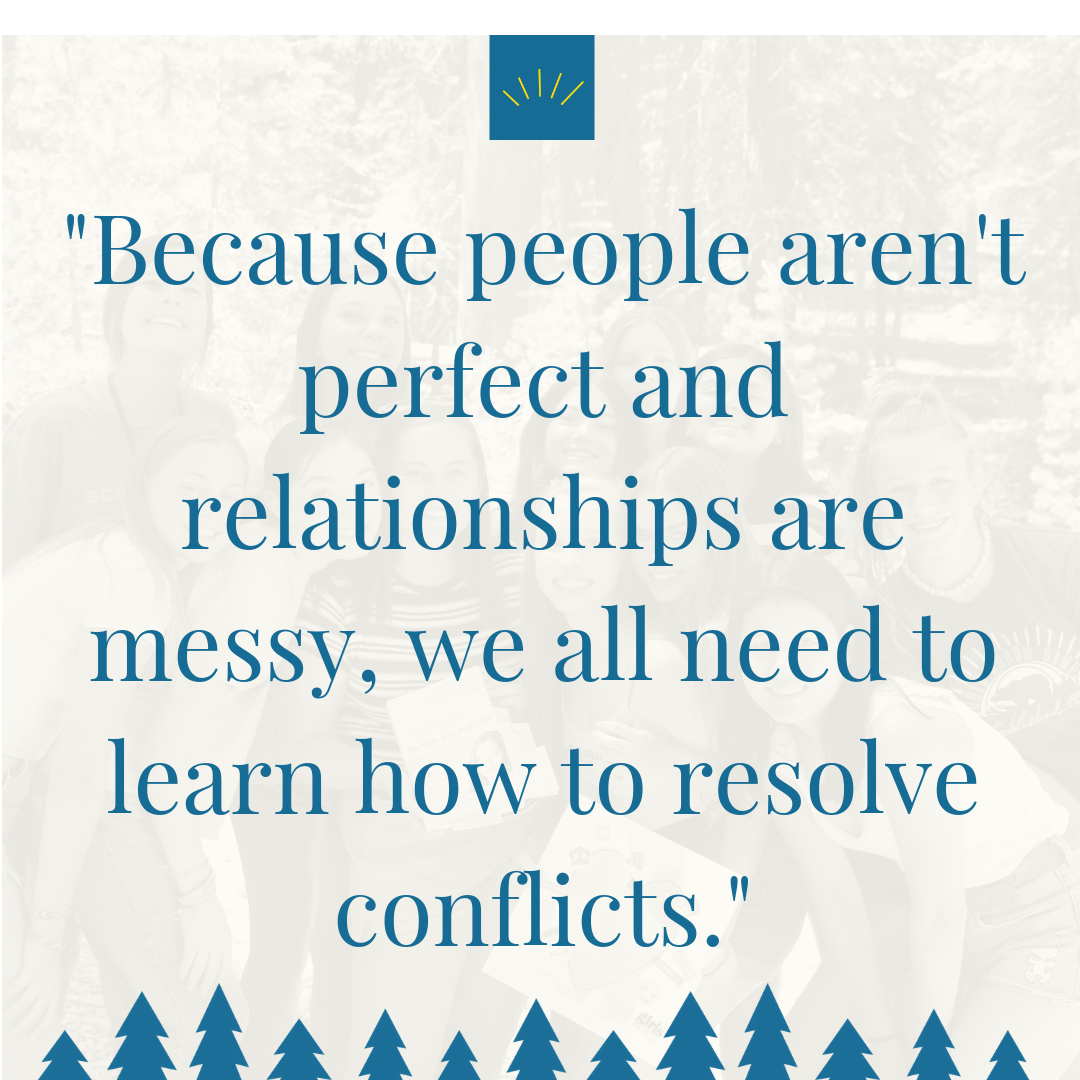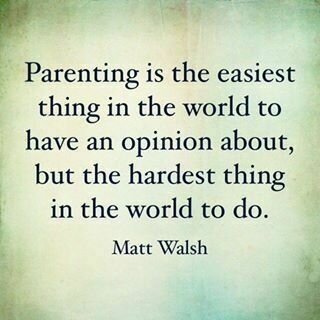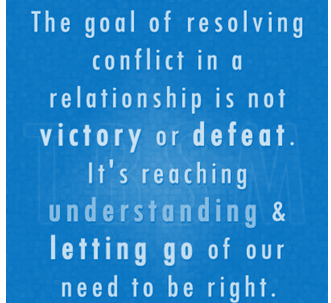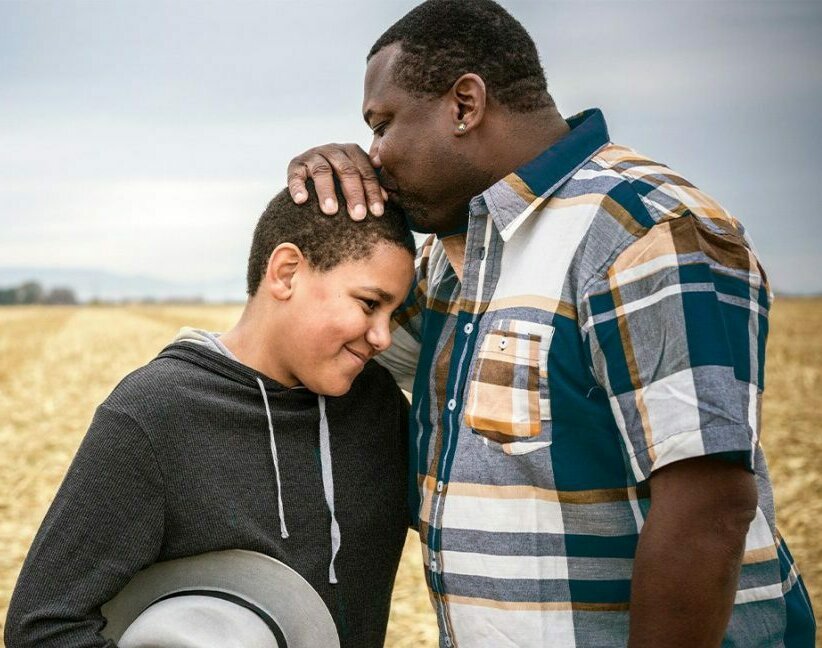|
|
|
|
|
|
|

| The COVID-19 pandemic has impacted family life significantly. Many families have remarked about the benefits of increased time together, greater connection, and more time spent on outdoor activities. However, there are also significant pressures that have been placed on family dynamics such as: job loss, financial concerns, increased social isolation, inability to connect with family and friends in person, anxiety about health concerns and the future impacts of COVID.
Conflict is a natural part of family relationships and the goal of this snapshot is to assist you in navigating challenges with helpful communication strategies.
|
| |
|
|
|
|
|
Family life can get complicated sometimes. Conflicts can happen between adults, between children and adults, or between siblings. Sometimes, families face difficulties that can cause conflicts or make them worse. Every family faces challenges and some problems are more serious than others.
|
|
|
|
Challenges could include:
financial problems
arguments between adults
fights between siblings
big changes in the family (a move, a job loss, a physical or mental illness, etc.)
addition or loss of family members (births, deaths, separations, divorces, remarriages, etc.)
addictions (drugs, alcohol, gambling, etc.)
generational and cultural differences
violent or abusive behaviour
|

|
| |
|
|
|
|
|

|
Parents and guardians set house rules to help their kids:
feel safe and secure
learn how to get along with others
develop respect for other people
learn what is and isn’t acceptable when sharing a space with others
learn self-discipline
learn skills that they will need to live independently, such as cooking and cleaning
feel a sense of consistency and defined limits for the household
live in an environment where both adults and children aren’t hurtful or disrespectful to each other
|
|
|
Every family’s rules will be different. Your family rules will be influenced by your culture, your beliefs and values, your situation and your child’s maturity and needs.
|
|
|
It is important to involve all members of the family when you‘re making house rules.
When you involve your children in making the rules it helps them understand why your family needs rules and they are more likely to accept them, see them as fair and stick to them.
It also gives teenagers the chance to take responsibility for their own behaviour.
|

|
|
|
|
Conflict is more likely to occur when adolescents are not involved in making the rules.
They may feel that your house rules:
are too strict
are expecting too much
are used to spy on them
They may feel the need to lie about what they are doing because the truth would get them in trouble.
|
| |
|
|
|

|
Talking Things Through
It’s important to have the conversation when everyone is calm. Here’s what to do if there is a disagreement:
Talk it out: Explain to your teen the need for house rules.
Listen in a non-judgmental manner: Be open to your child helping to earn your trust and show that they’re responsible.
|
|
|
|
Encourage your teen to open up: Share your feelings and acknowledge that we all make mistakes sometimes, but that we can try to learn from them.
Compromise: Ask if your teen can offer input about the house rules as well as the consequences for not following them (see autonomy supportive parenting below).
Reach out and connect when things resolve. The repair and emphasis on how much you love your child is the priority.
Below are are a few tips on managing conflict with your teen:
|
| |
|
|
|
|
|
|
Don't lose your cool: It might be difficult for parents and guardians not to lose their cool when their teenagers are acting stubborn and escalating crises. It is important as the adult that you keep your cool and do not escalate the conflict further. You can let the moment pass and try and reason with your child later. They will be more receptive to your ideas when both of you are calm.
|
| |
|
|
|
|

|
Identify the real issue: When families argue, sometimes it is hard to point out the actual reason the fight began. It is important for you to be able to recognize the real issue behind the conflict with your child.
Sometimes, caregivers fight with their kids about insignificant things because they fear that their child‘s actions will reflect badly on their parenting.
At other times, it may be that the topic has become symbolic, For example, a messy room may be a symbol for feeling generally disrespected.
|
| |
|
|
|
|
Allow yourself to disengage: When you have done everything in your ability to get a point across to your child, but in vain, it is okay to say that you have had enough and walk away. It is important for caregivers to find their peace as well. Try again when you feel the time is right.
|
 |
| |
|
|
|
|
|
|
|
|
Martyn Richards is a researcher specializing in the world of children and young people. He helps us unpick the brain, in order to start to truly understand teenagers.
|
| |
|
|
|
|
|
|
|
|
A teen’s opinion on parenting from stereotypes and experience. This talk teaches parents about technology, teen emotions, and types of parents, all from a teen’s perspective.
|
| |
|
|
|
|
|

| Parenting is an amazing responsibility and while there's no one right way to parent, researchers have been studying different parenting styles and the effects they have on children for decades. It's important to ensure your parenting style is supporting healthy growth and development because in the words of Franklin D. Roosevelt: “We cannot always build the future for our youth, but we can build our youth for the future.” Growing your awareness of parenting styles can help you become the best parent you can be.
|
|
|
Researchers have identified 4 types of parenting styles:
1. Authoritative
2. Neglectful
3. Authoritarian
4. Permissive
Each style takes a different approach to raising children and can be identified by a number of different characteristics.
|
|
|
|
AUTHORITATIVE PARENTS Diana Baumrind – the researcher credited with developing the parenting styles model – suggested that authoritative parents ought to rely heavily on their power to coerce their children to comply with limits. And that they should just do it warmly, where possible. The idea here is that we clearly show we are the parent, and we have firm, strict rules. We just need to stay warm and “kind” while we‘re putting our kids in time out or removing privileges from them...

|
| |
|
|
|
|
|

|
As the name suggests, autonomy supportive parenting helps children and teens develop in ways that support their autonomy and independence. It is a parenting style where parents intentionally involve their kids in making decisions and performing actions, that are age-appropriate and safe. This parenting style is a middle ground where children are supported without being overly protected or limited.
|
|
|
This parenting style NOT a soft way to parent. It requires openness, flexibility, and a strong positive relationship. It demands that adults know what they are asking of their children and why. And it means all involved have the humility to recognize we don’t know everything.
|
|
|
 |
It works like this:
- Give youth a clear reason for requesting certain behaviours
- Recognize the feelings and perspective of the child
- Minimize the use of controlling techniques
- Offer choices and encourage initiative and problem solving
|
|
|
Problem solving, is the powerful part of the process. It is where the adult invites the youth to come up with limits and then guide them accordingly. This is how teens internalize and “buy-into” the rules – because they’re making them up with the care givers, rather than having rules as demands. As mentioned above in letting teens be part of setting the house rules.
|
 |
|
|
Studies show that when we use this type of parenting, we build our relationship and we strengthen our children’s ability to make great decisions. Our discipline problems are reduced. By letting go of power and by developing our children’s ability to make good decisions for themselves, we raise healthier kids, and happier families.

|
|
|
|
|
|
|
|

| Several copies of this poster have been distributed to all middle schools for student learning.
The goal of conflict resolution is not to decide which person is right or wrong; the goal is to reach a solution that everyone can be satisfied with.
When conflict is resolved effectively, it leads to many benefits, such as accomplishing goals and strengthening relationships.
|
| |
|
|
|
|
|
|

| Do you enjoy the monthly Snapshots?
Do you have suggestions on how to improve the Snapshots?
Do you have ideas for future topics?
Let us know!
We would love to hear from you!

|
| |
|
|
|
|
|
|
|
|
|
|
|